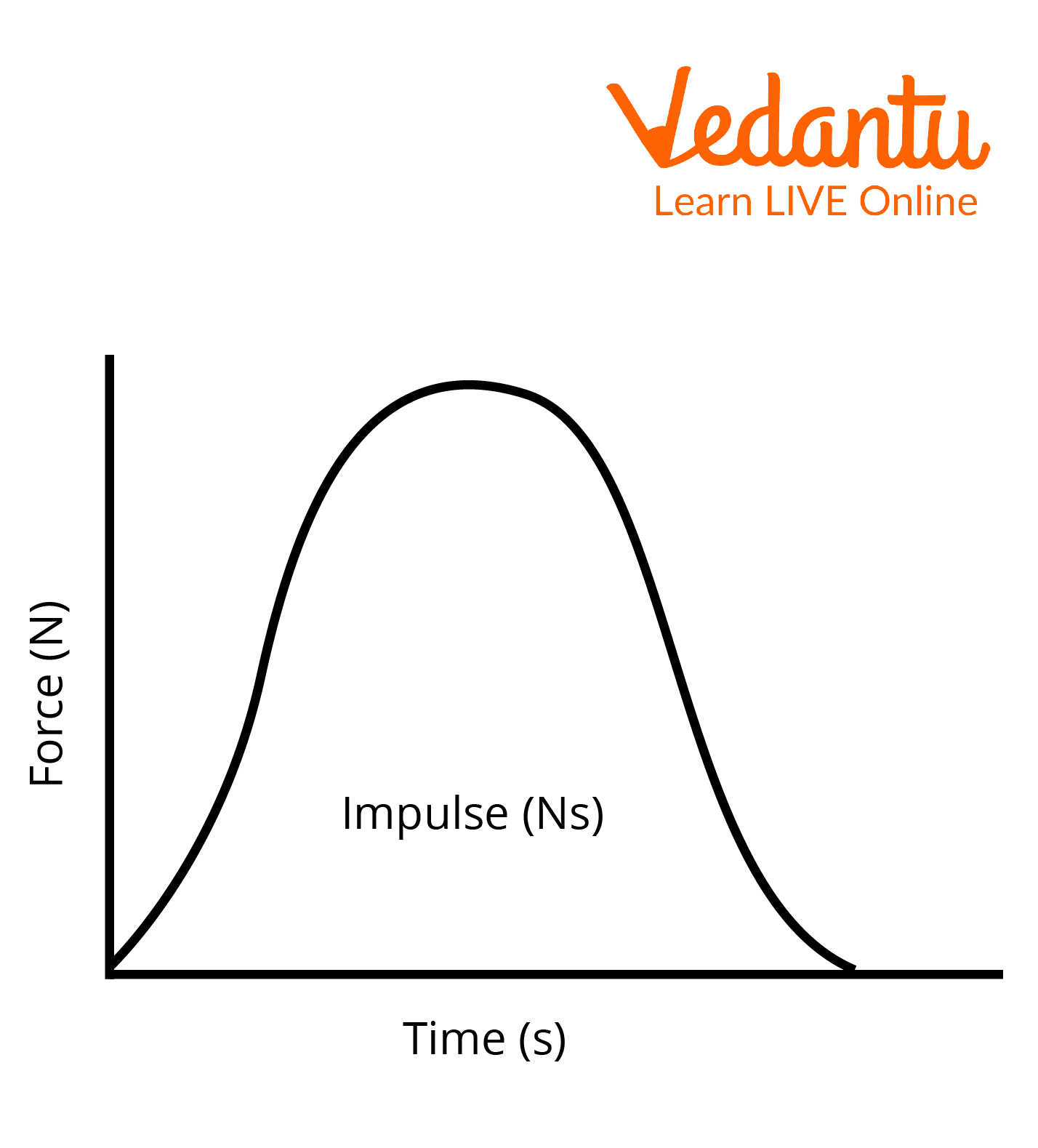




How Does the Impulse-Momentum Theorem Help Solve Physics Problems?
In Physics, momentum is associated with dynamic objects. The momentum objects the product of its mass with velocity. The impulse of an object is the product of force with time. Both the physical quantities play an important role in kinematics and are related to each other by Impulse-Momentum Theorem. According to the impulse-momentum theorem, an object will experience an impulse that is equal to the change in its momentum.
In this article, we can now see how the impulse-momentum theorem demonstrates how a smaller net force applied over a prolonged period of time can result in the same velocity change as a big net force delivered over a brief period of time.
History of Jean Buridan

Jean Buridan
Name: Jean Buridan
Year of Birth: 1301
Year of Death: 1358
Field: Physics
Discovery: He was the very first person to discover momentum which proved to be a very important concept in Physics.
Impulse-Momentum Formula
The formula used for the impulse-momentum theorem is
$F.\Delta t=m({{v}_{f}}-{{v}_{i}})$
\[F\] = Force applied to the object
$\Delta t$ = Time duration
$m$ = Mass of the object
${{v}_{f}}$ = Final velocity of the object
${{v}_{i}}$ = Initial velocity of the object
Statement of the Impulse-Momentum Theorem
According to the impulse-momentum theorem, the change in momentum of an object will be equal to the impulse that was applied to it.
Proof of the Impulse-Momentum Theorem
According to Newton’s Second Law,
$F=\dfrac{dP}{dt}$
F is the force applied and $\dfrac{dP}{dt}$ is the change in momentum.
By cross-multiplying, we get
$F.dt=dP$
Integrating both sides, we get
$\int\limits_{0}^{t}{F.dt}=\int\limits_{{{p}_{i}}}^{{{p}_{f}}}{dP}$
$Ft={{p}_{f}}-{{p}_{i}}$
$Ft=\Delta P$
From Newton’s Second Law of Motion, we know that $P=mv$.
As impulse is represented as $F\times t$, so we can replace it by ‘J’.
J =$Ft=m{{v}_{i}}-m{{v}_{f}}$
J = $Ft=m({{v}_{i}}-{{v}_{f}})$
Hence proved.
Diagram of Impulse Momentum Theorem

Impulse Momentum Theorem
This graph is a depiction of the Impulse Momentum Theorem and we can see that impulse is the area under the curve of the Force-Time graph from the equation. Also, we can see that $J=\int{P.dt}$.
Application of the Impulse-Momentum Theorem
Car airbags lessen the effect of a crash by extending the time that the force has to act. Whether an airbag is present or not, a car's change in momentum after an abrupt stop is the same. Without an airbag, the force that stops the person moving in a very brief period of time could cause fatal injuries like head injuries, broken necks, and spinal cord injuries.
Longer time periods are needed in sports like pole vaulting, gymnastics, and boxing to reduce the force's impact. For instance, pole vaulters frequently come to rest on their backs. Only the force and time interval may alter because there is no change in momentum as they land.
Bungee jumping spreads the force of the impulse over a longer period of time using a long, elastic line, which decreases the force's impact on the jumper. If a regular rope is utilised, the user will abruptly stop, which could result in catastrophic injuries.
Solved Examples
1. A marble of mass 0.1 kg falls off a bed with a height of 1.2m. What is the impulse on the marble as it hits the ground?
Ans: Impulse is written as $J=F\Delta t=m({{v}_{f}}-{{v}_{i}})$
There is no loss of energy, hence we can apply the Law of Conservation of Energy:
$E={{U}_{i}}+{{K}_{i}}={{U}_{f}}+{{K}_{f}}$
We can assume the final height to be zero. Hence, ${{K}_{i}}=0$.and ${{U}_{f}}=0$
$mg{{h}_{i}}=(\dfrac{1}{2}m{{v}_{f}}^{2})$
Cancelling m from both sides and rearranging the equations, we get
${{v}_{f}}=\sqrt{2gh}$
${{v}_{f}}=\sqrt{2(9.8)(1.2)}$
${{v}_{f}}=4.84m/s$
Calculating Impulse, we get
$J=m({{v}_{f}}-{{v}_{i}}){{m}^{2}}/s$
$J=0.1(4.84-0){{m}^{2}}/s$
$J=0.484{{m}^{2}}/s$
Hence, the impulse on the ball when it hits the ground is $0.484{{m}^{2}}/s$.
2. A 150g baseball is thrown with a speed of 40m/s. If it takes 0.7s for the baseball to come to rest in the catcher's glove, what is the average force the catcher experiences due to the ball?
Ans: Impulse is written as
$J=F\Delta t=m({{v}_{f}}-{{v}_{i}})$
Rearranging the equation, we get
$F=\dfrac{m({{v}_{f}}-{{v}_{i}})}{t}$
$F=\dfrac{(0.15kg)(40m/s)}{0.7s}=8.57N$
Hence, the average force the catcher will experience is $8.57N$.
3. A soccer ball of 0.45kg is heading toward a wall at a speed of 20 metres per second. After hitting the wall, the ball bounces back at a speed of 25 metres per second. The ball was in contact with the wall for 0.003 seconds. What is the average force the wall exerted on the ball?
Ans: Initial velocity of the ball = $20m/s$
Final velocity of the ball = $-25m/s$
Sign convention: +ve X-axis is taken as the +ve direction and vice-versa.
$J=F\Delta t=m({{v}_{f}}-{{v}_{i}})$
Rearranging the equation, we get
$F=\dfrac{m({{v}_{f}}-{{v}_{i}})}{t}$
$F=\dfrac{(0.45kg)(-25m/s-20m/s)}{0.003}$
$F=\dfrac{(0.45kg)(-45m/s)}{0.003}$
$F=-6750N$
Important Points to Remember
Impulse is denoted as ‘\[J\]’.
Unit of impulse and unit of acceleration are the same, i.e., \[\dfrac{{{m}^{2}}}{s}\].
Dimensional formula of impulse is $\left[ {{M}^{1}}{{L}^{1}}{{T}^{-1}} \right]$.
Conclusion
The article explains crucial Physics concepts like momentum and impulse. The impulse-momentum theorem explains how impulse and momentum are related. It asserts that the impulse is equal to the body's change in momentum. Impulsive force is a force that affects a body for a short period of time. The force exerted on a body during a collision that causes a change in momentum is the most typical illustration of an impulsive force.
FAQs on Impulse-Momentum Theorem: Definition, Formula & Applications
1. What is the Impulse-Momentum Theorem?
The Impulse-Momentum Theorem states that the change in momentum of an object is equal to the impulse applied to it. In simpler terms, when a net force acts on an object over a period of time, it produces a change in the object's momentum. This theorem directly connects the concepts of force, time, and the resulting change in motion.
2. What is the formula for the Impulse-Momentum Theorem?
The formula for the impulse-momentum theorem is expressed as: J = Δp, which can be expanded to F_avg × Δt = m × v_f - m × v_i.
- J is the impulse.
- Δp is the change in momentum.
- F_avg is the average net force applied.
- Δt is the time interval over which the force is applied.
- m is the mass of the object.
- v_f is the final velocity, and v_i is the initial velocity.
3. How is the Impulse-Momentum Theorem derived from Newton's Second Law of Motion?
The Impulse-Momentum Theorem is a direct consequence of Newton's Second Law of Motion. The derivation is as follows:
- Newton's Second Law states that force (F) is the rate of change of momentum (p): F = dp/dt.
- By rearranging this equation, we get: dp = F dt.
- To find the total change in momentum over a time interval from an initial time (t_i) to a final time (t_f), we integrate both sides of the equation.
- This integration results in Δp = ∫F dt, where the integral of force over time is the definition of impulse (J).
- Therefore, we arrive at the theorem: Δp = J.
4. What are some real-world examples of the impulse-momentum theorem in action?
The impulse-momentum theorem explains many everyday phenomena where forces are managed by controlling impact time. Key examples include:
- Airbags in Cars: During a collision, airbags increase the time it takes for a person to stop. This longer impact time reduces the average force exerted on the person for the same change in momentum, preventing serious injury.
- Catching a Ball: A cricketer pulls their hands back while catching a fast ball. This action increases the time (Δt) of impact, which reduces the force (F) on the hands.
- Jumping and Landing: When you land after a jump, you instinctively bend your knees. This flexion increases the time of collision with the ground, thereby decreasing the impact force on your legs and joints.
5. Why is impulse considered a vector quantity?
Impulse is a vector quantity because it is defined by the product of force (a vector) and time (a scalar). Since force has both magnitude and direction, the resulting impulse also has both magnitude and direction. The theorem itself equates impulse (J) to the change in momentum (Δp), which is also a vector. Therefore, the direction of the impulse is always the same as the direction of the net force that causes the change in momentum.
6. How does the Impulse-Momentum Theorem explain the success of an egg drop experiment?
In an egg drop experiment, the goal is to prevent the egg from breaking upon impact. The theorem explains how this is achieved:
- The egg's change in momentum (Δp) from its falling speed to zero is a fixed value.
- According to the formula F_avg × Δt = Δp, the impact force (F_avg) is inversely proportional to the impact time (Δt).
- A successful protective device (using padding, a parachute, etc.) works by increasing the collision time. By making the impact last longer, the device ensures the average force exerted on the fragile eggshell is too small to cause it to crack.
7. What is the key difference between impulse and momentum?
While related, impulse and momentum are fundamentally different concepts:
- Momentum (p = mv) is a property that a moving object possesses. It is a measure of its mass in motion and describes its state at a single instant.
- Impulse (J = FΔt) is not a property of an object. It is a measure of the total effect of a force acting over a period of time, representing the process that causes a change in momentum.
8. In which chapter of the CBSE Class 11 Physics syllabus for 2025-26 is the Impulse-Momentum Theorem found?
As per the CBSE Class 11 Physics syllabus for the 2025-26 academic year, the Impulse-Momentum Theorem is a key topic covered in Chapter 5: Laws of Motion. It is presented as a direct application of Newton's Second Law and is crucial for understanding collisions and forces.
























